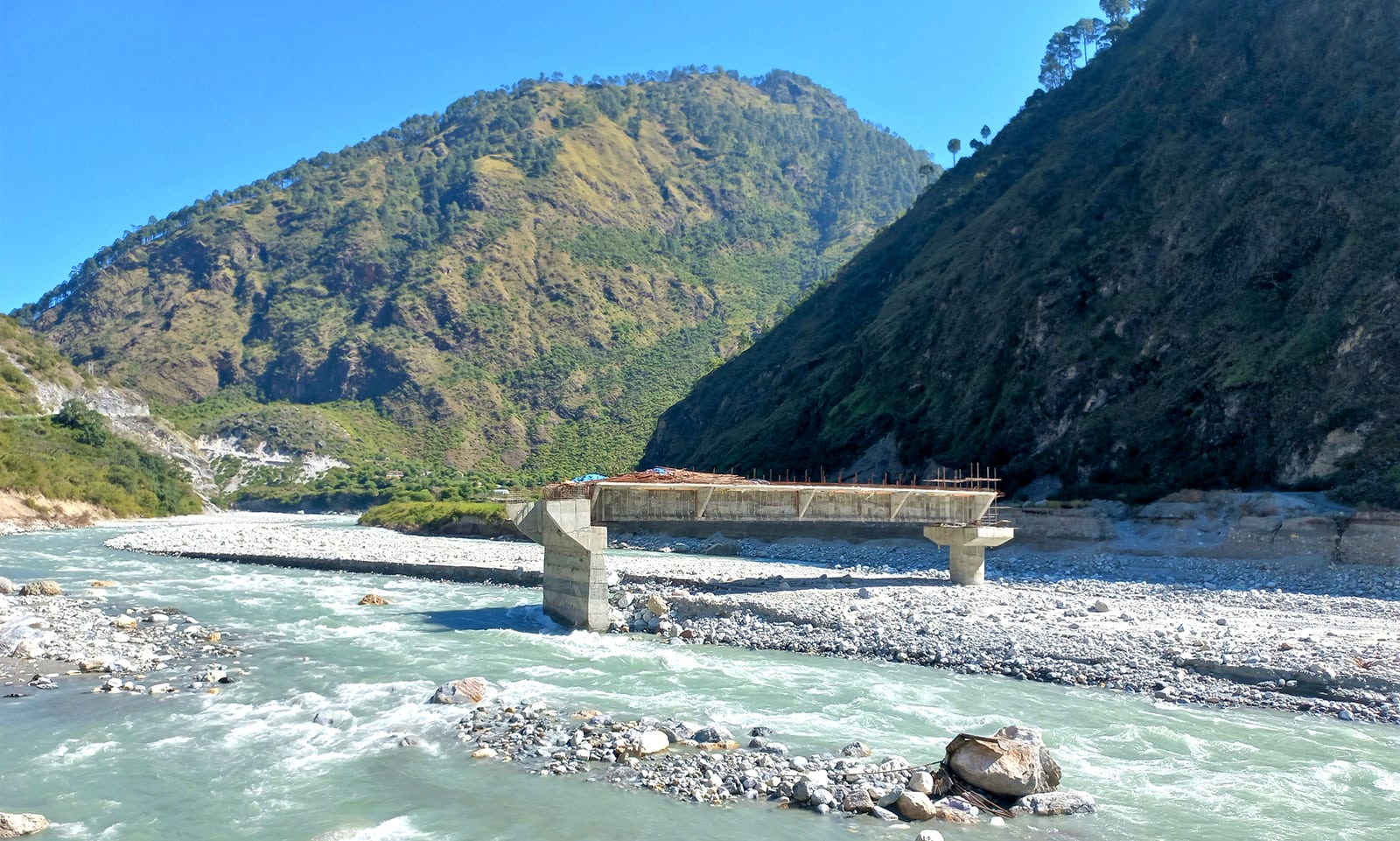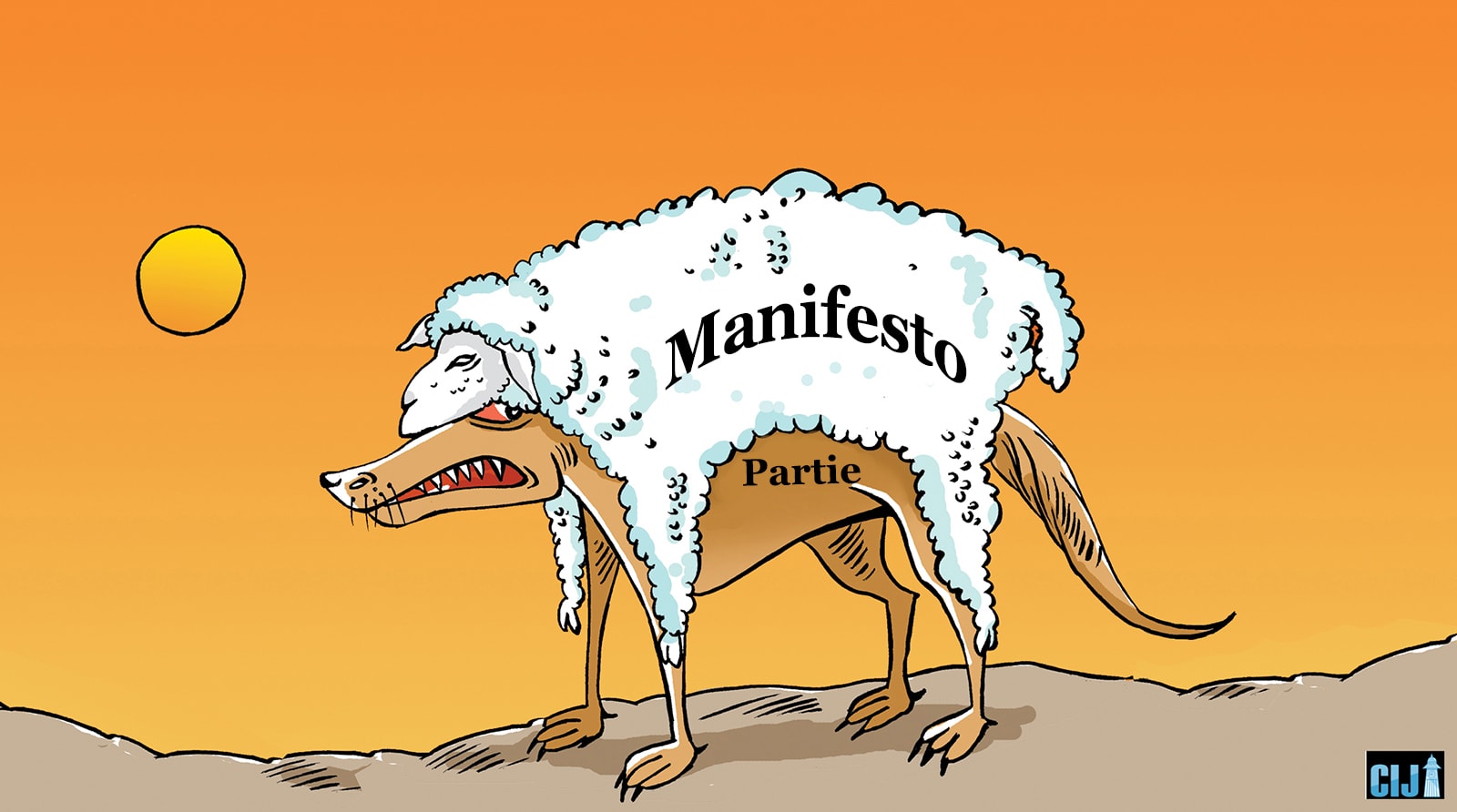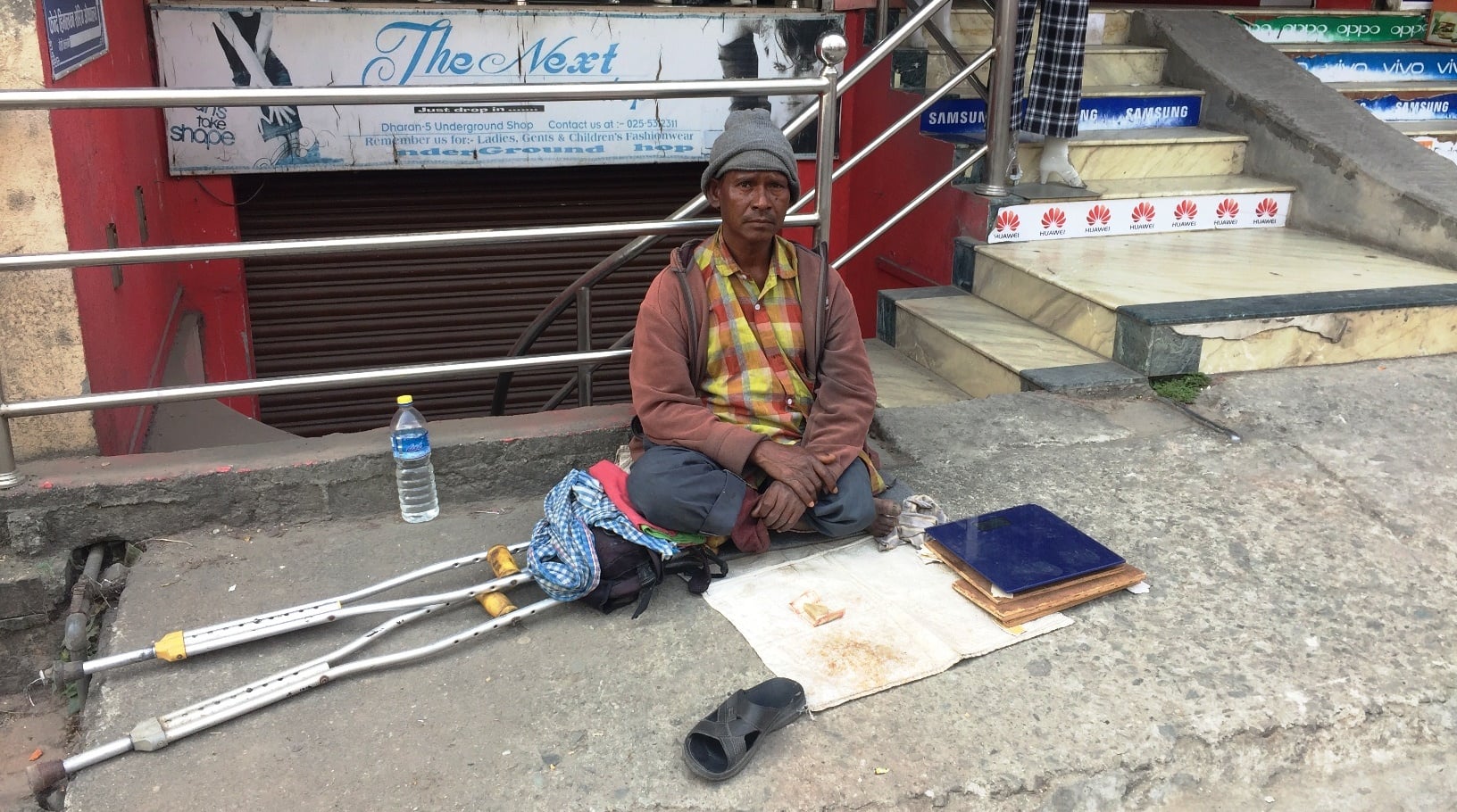Planning booklets of local federal units and records of concerned provincial ministries show the two provinces with low development indicators spent hefty sums in the unproductive sector last fiscal year.
Surendra Kamati in Siraha, Basanta Pratap Singh in Bajhang and Lokendra Saud in Baitadi : Centre for Investigative Journalism-Nepal
Three years ago, houses of 13 poor families at Majhauliya in Kalyanpur Municipality-8, Siraha were demolished promising them new homes. The federal government had announced its People’s Housing Programme to build houses for the homeless. Ironically, none of the families who lost their homes in the process have got a roof above their heads.
 Rudal Sada, who has remained helpless since his house was pulled down, says they are taking shelter in a school building to be safe from rain and storm. “The government has not built our homes yet,” he said.
Rudal Sada, who has remained helpless since his house was pulled down, says they are taking shelter in a school building to be safe from rain and storm. “The government has not built our homes yet,” he said.
Meanwhile, the provincial government has spent Rs 6.5 million this fiscal year to restore the Durga temple in Kalyanpur near the Majhauliya settlement. The industry, tourism, forest and environment ministry of Province 2 provided the funds while Kalyanpur Municipality contributed Rs 1 million for the restoration.
In the past fiscal year, Kalyanpur Municipality alone spent Rs 11.6 million on a plan involving 25 temples and shrines. This project ridicules the homeless Majhauliya residents. “We have no home but the government is building temples,” says Phuliya Devi Sada, a local.
According to the budget, policies and programmes document (local gazette), 17 local federal units of Siraha spent a total of Rs 144.2 million in the fiscal year 2018-19 on the construction and maintenance of temples, mosques and monasteries. Investment in the sector was similar in earlier years too (Table 1).
Former reader Rajendra Bimal at Ramswarup Ramprasad Multiple Campus Janakpur remarked that the local, provincial and federal governments had been spending on religious sites instead of the essential irrigation, education and health sectors. “There can’t be development by investing in unproductive sectors. In the absence of coordination between the local level, provinces and the union, many important sectors have been left out.”
No home in the impoverished Musahar community of Tilakpur Musahari of Siraha’s Naraha Rural Municipality-5 has a toilet. When the district was declared open defecation free last year, the ward office and some non-government organizations helped Musahar families to build toilets. But the toilets did not last a year. After their roofs were blown in the storm, people of the community are forced to defecate in the open.
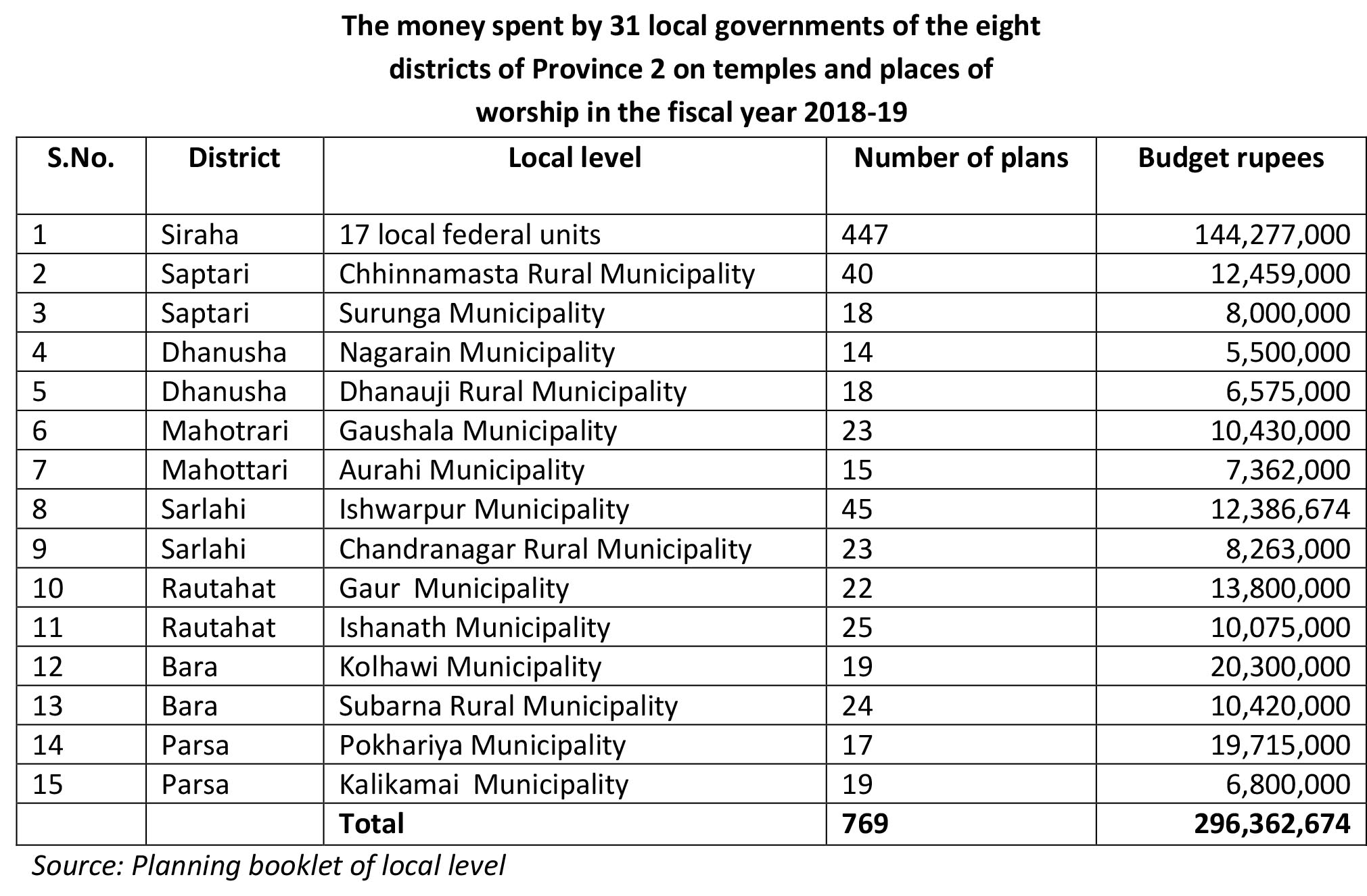 In the past fiscal year, Nahara Rural Municipality spent Rs 4.88 million on building temples and shrines. “Temporary toilets had been built with bamboo fencing walls. We did not allocate budget for them when they were said to be built by NGOs,” local government chief Ramsharan Yadav says. “We spent on temples and shrines this year. We’ll build toilets next year.”
In the past fiscal year, Nahara Rural Municipality spent Rs 4.88 million on building temples and shrines. “Temporary toilets had been built with bamboo fencing walls. We did not allocate budget for them when they were said to be built by NGOs,” local government chief Ramsharan Yadav says. “We spent on temples and shrines this year. We’ll build toilets next year.”
At Sanhaitha in Siraha Municipality-19, twelve Dom families have an acute shortage of drinking water as they have access to only one public hand pump. “We elected our leaders with the hope of getting water. But they want to build temples and ghats first,” says Rekha Mallik, a local.
Close to this settlement grappling with water shortages, the industry, tourism, forest and environment ministry of Province 2 is building a Nawadurga temple at the cost of Rs 2.5 million and a ghat at the Baisi pond. In the adjacent Aurahi Rural Municipality-4, the provincial ministry is renovating a Mahadev temple for Rs 5 million and building an embankment for a cemetery for Rs 5 million.
People are deprived of drinking water, residence and toilets but people’s representatives are investing in the construction and renovation of religious sites. Mayor Asheshwar Prasad Yadav of Siraha Municipality says more investment is necessary in the religious sites of tourist destinations. “Even if we don’t, the ward will allocate budget. The investment in the construction and renovation of religious sites is high also due to campaign promises,” says Yadav.
The local units in the seven other districts of Province 2 are no different from those in Siraha. Significant chunks of budgets of the provincial and local governments are being spent on the construction of shrines. Including the 17 local units of Siraha, 31 local governments of Province 2 have spent a total of Rs 296.36 million on the construction and repair of temples, mosques and monasteries (Table 2). Including the programmes of the members of federal and provincial parliaments and the provincial ministries, such expenditure in the past fiscal year exceeded Rs 410 million (Table 3).
There are no signs of an end to this practice. The budget for the current fiscal year revealed in Province 2 on July 16 looks more religious sites-friendly. The provincial government has allocated Rs 380 million for the construction and renovation of the places of worship in the eight districts.
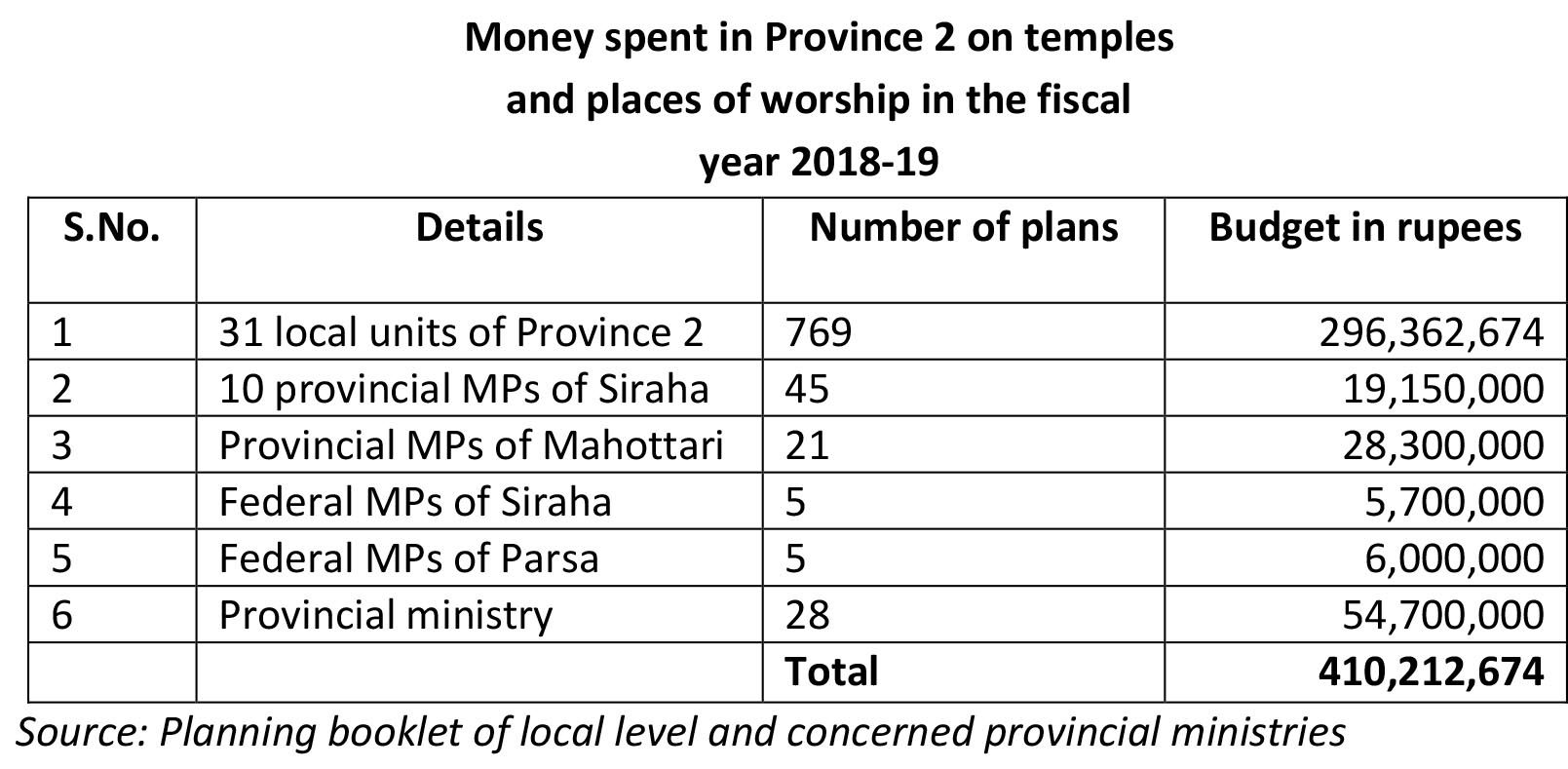 The programmes and policies of the provincial government unveiled on June 2 included the goals of Integrated Chhinnamasta Project and the development of pilgrimage sites from Saptari to Parsa. Province 2 minister for agriculture Shailendra Prasad Sah says: “Funds are being demanded for temples and mosques even today. It’s unfortunate that temples and mosques are being demanded in every settlement.”
The programmes and policies of the provincial government unveiled on June 2 included the goals of Integrated Chhinnamasta Project and the development of pilgrimage sites from Saptari to Parsa. Province 2 minister for agriculture Shailendra Prasad Sah says: “Funds are being demanded for temples and mosques even today. It’s unfortunate that temples and mosques are being demanded in every settlement.”
According to the Nepal Living Standard Survey conducted by the Central Bureau of Statistics 10 years ago, Province 2 is the poorest region in Nepal after the Far West. While Nepal’s overall multi-dimensional poverty rate is 28.6 percent, that for Province 2 is 47.9 percent. According to the government’s latest economic survey, 125,721 youths of Province 2 have gone to a foreign country for employment. This is the highest proportion of outmigration among all the provinces. The percentage of unemployment is 20.1 and extreme poverty 19.8 in Province 2.
The attention of this province lagging in development indicators is on building and renovating places of worship. In the eight provincial districts covered by this investigation, more that Rs 410 million was spent last fiscal year on temples and shrines. Annual allocations of all the local and provincial governments in Province 2 are estimated to exceed Rs 1 billion. “Due to a mix of politics and religion, development budget is diverted to temples-shrines. This kind of disregard for people’s needs is misuse of power. The province can’t prosper this way,” says Tula Narayan Sah, a political analyst.
Dev Kumar Yadav, a journalist, says spending development budget on religious sites has been a tradition in the Madhes. “During the Pachayat, temples were built in the midst of a poor settlement. Now they are built in the middle of a road spending millions of rupees,” says Yadav. “Nobody speaks about this misuse of development budget since it’s not easy to protest against the construction of temples.”
According to Yadav, temple construction is only the cover. The hidden motive is to get a cut from the budget to appease party cadres.
Dhirendra Sah, a campaigner for building toilets in the plains, says: “Temple-shrine, mosque constructions are easy ways for leaders to gather votes and cash. This has also made it easy for them to ignore the concerns of the poor. It’s not easy to advocate toilet construction by protesting the building of temples.”
Sudurpaschim is similar
The industry, forests, environment and tourism industry of Sudurpaschim Province allocated Rs 300,000 last fiscal year for the construction of a wall surrounding ‘Devjhadi Temple’ in Patan Municipality-6 of Baitadi. Since there did not exist the said temple, ward chairman Rajendra Bista suggested using the budget to build a wall for the Devthali temple. Earlier fiscal year, the ministry had released Rs 475,000 to build the ‘Devthali temple wall’. Since the Devjhadi temple was not found, ward chairman Bista said he had recommended the fencing of Devthali temple.
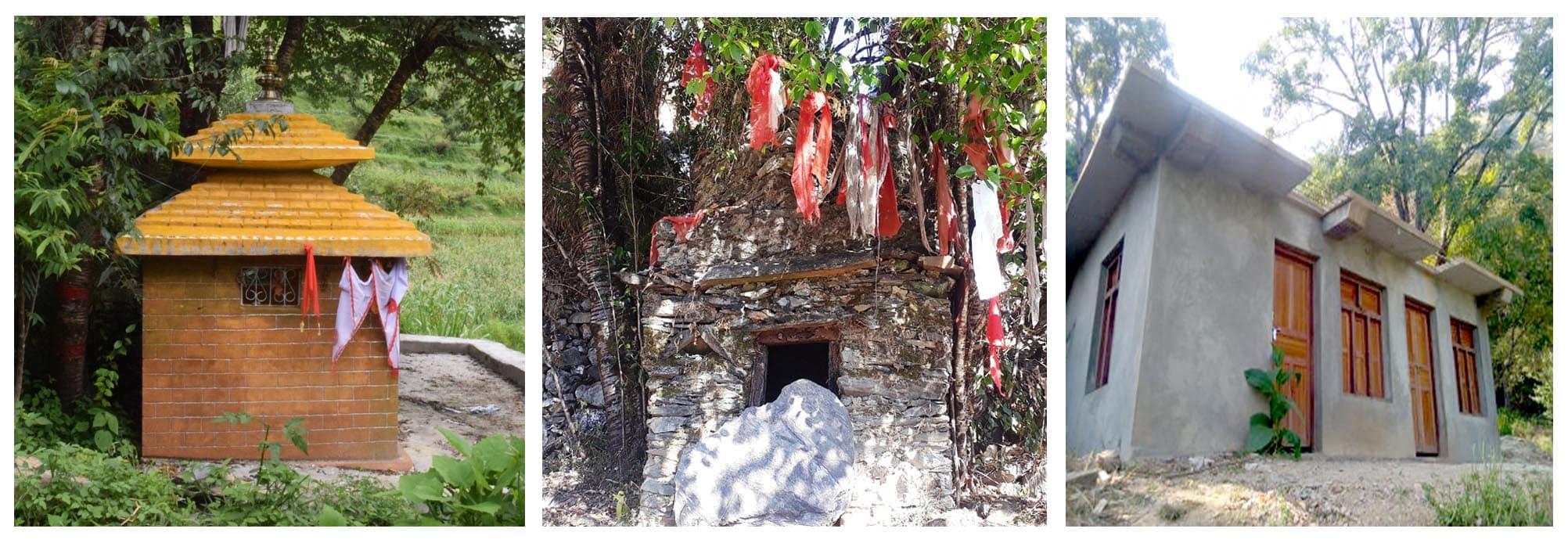
Gorakhnath Temple (before and now), which has been listed among the country’s 100 tourist destinations.
The Gorakhnath temple at Daula Gaun in Durgathali Rural Municipality-7, Bajhang was listed by the Tourism Ministry last year among the top 100 tourist destinations across the country. Local residents, however, were unaware of the listing by the federal government. “I don’t know which temple in this village is called Gorakhnath’s,” said Dhansari Daulyal, a Daula local.
The ‘Gorakhnath’ temple is a clan shrine worshipped by some 40 local Singh families. The Gorakhnath temple is some 50 metres away from the home of member of parliament Bhairav Bahadur Singh. No one knows on what basis this temple was listed among the 100 destinations. Last fiscal year, Rs 50 million was spent on building infrastructure at the temple while the same amount of budget has been allocated for the shrine this fiscal year.
Last fiscal year alone, the Sudurpaschim ministry of industry, forest, environment and tourism spent around Rs 327 million on temples and shrines. The money was spent in the name of identifying tourist destinations and infrastructure development for 357 temples in nine districts.
In Baitadi, the home district of industry, forest, environment and tourism minister Maya Bhatta, 67 temples were built or renovated at a total cost of Rs 32 million. Bhatta released funds even for places of worship by families of in-laws, maternal lineage and other relatives. State funds have been spent lavishly in other districts of the province too on temple construction and repair. Recipients of the funds are 45 temples in Kailali, 47 in Achham, 24 in Bajhang and 26 in Kanchanpur. Admitting that enough money was set aside for the construction and repair of temples, Bhatta said budget was allocated proportionally for all the districts.
According to a decade-old Nepal Living Standard Survey, Sudurpaschim is the country’s poorest province, where 33.9 per cent people are still below the poverty line. The data published by the provincial ministry of land management, agriculture and cooperative five months ago showed 1.63 million of the 2.61 million far-western people don’t get to eat bellyful around the year. However, the local and provincial governments of this impoverished state are pouring budget for the construction and repair of temples and devi shrines.
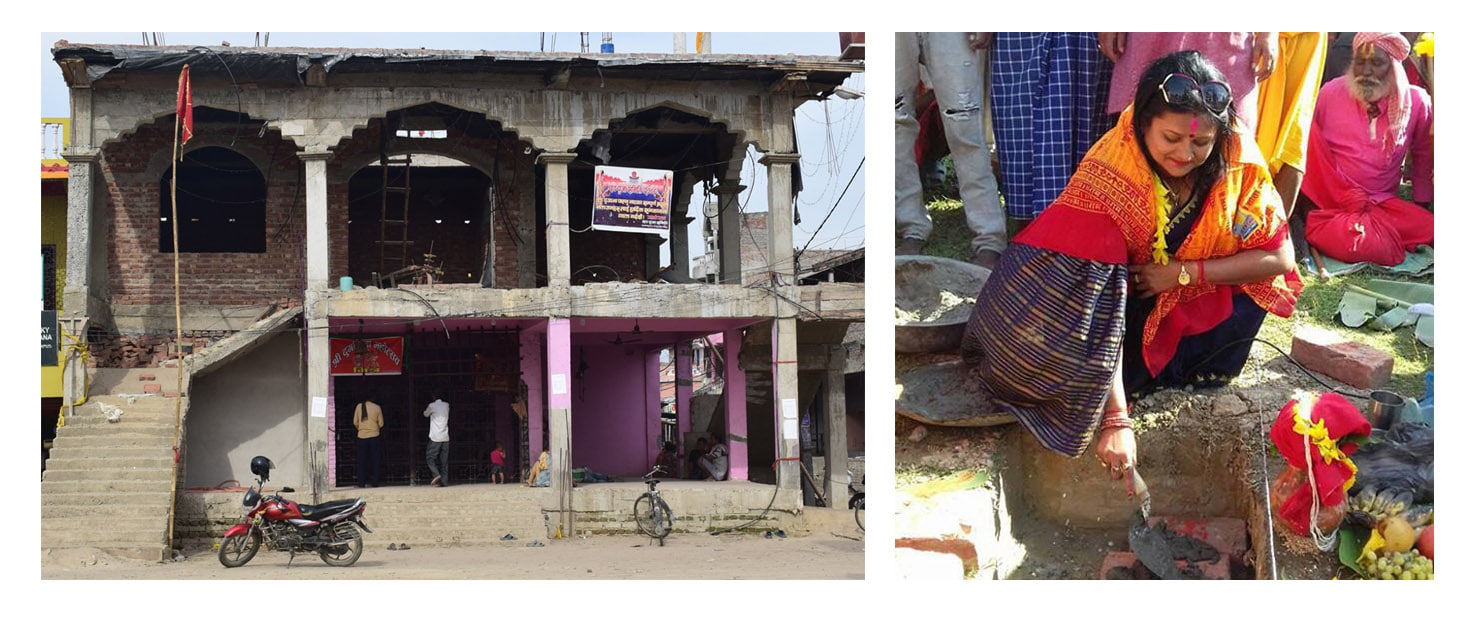
A house built on the land of Khadka Chimadi with the budget for Bathpala Muthipata.
In Doti, the home district of Chief Minister Trilochan Bhatta, Rs 22.2 million has been set aside for works on 45 temples. According to the statistics with the provincial ministry of industry, forest, environment and tourism, the number of temples built or maintained is 22 in Bajura, 25 in Darchula and 14 in Dadeldhura.
Sudurpaschim Assembly members have allocated Rs 55.2 million for the construction of 65 temples in nine districts from their Infrastructure Development Programme. The Sudurpaschim provincial government, federal and provincial Members of Parliament and 22 local federal units in Baitadi and Bajhang districts, which have been covered by this investigation, spent a total of Rs 649.05 million on temples and shrines last fiscal year.
MPs have set aside budget from the Local Infrastructure Development Partnership programme for temples this year too. In Bajhang, the federal lawmaker has distributed Rs 5.1 million from the Rs 60 million fund for temples this fiscal year. On November 11, 2019, a meeting of the team involving lawmakers Bhairav Bahadur Singh, Asha Kumari BK and Prakash Bahadur Rasaili distributed the money among five temples of Bajhang.
All the local governments of the seven districts of Sudurpaschim Province excepting Bajhang and Baitadi have spent a total of Rs 2 billion in the past two years, says Krishna Bahadur Mahara, a tourism entrepreneur and Nepal Tourism Board member.
“Spending of so much money on the building and maintenance of temples is a surprise. Here, budget has been distributed among party workers in the name of temples,” said Mahara. “The main reason for the Sudurpaschim province lagging behind is not a dearth of resources but a lack of their utilization.”
For instance, no one has paid attention to conserving the historic ‘Panchadewal’ at Devalhat in Dasharathchand Municipality-4 of the Baitadi district headquarters. But the municipality spent Rs 600,000 in the fiscal year 2017-18 to build 100 metres to the west of Panchadewal the ‘Durga Mandir’ worshipped by 30 Bogati families. On top of that, the provincial government spent Rs 380,000 to build a wall to retain the temple. A part of the wall built in the rainy season crumbled within a month but the ministry sanctioned the project.
Of the 14 plans of Dasharathchand Municipality under the tourist destination identification and infrastructure development programme, nine are within a three-kilometre periphery of Panchadewal. Rs 6.15 million was spent for that in the fiscal year 2018-19. The provincial ministry has allocated budget for similar projects soon after a construction was completed.
Ward 4 of Dasharathchand Municipality had built steps leading up to Jagannath Temple in the fiscal year 2017-18. Then the tourism ministry disbursed Rs 300,000 last fiscal year to build the same flight of steps. After signing a contract for building the steps, the locals constructed the roof for the temple. “We could not send the project back,” said Raju Bhul, a local resident.
Budget in ancestral shrines
The tourism ministry has spent Rs 475,000 to build the Bamani Aama temple at Richapala in Dasharathchand Municipality-5, Baitadi. Three gates have been built at the temple with the money. The Bamani Aama temple is worshipped by 70 households of the Bhatta community.
 The provincial government has spent budget on such ancestral temples in Baitadi, terming them as tourist destinations. In Sundarghar, the village neighbouring Richpala, a pilgrims’ shelter has been built at a cost of Rs 475,000. Dhananjaya Bhatta, a local, says the Dharmashala was built for shelter at night while performing rituals at the temple.
The provincial government has spent budget on such ancestral temples in Baitadi, terming them as tourist destinations. In Sundarghar, the village neighbouring Richpala, a pilgrims’ shelter has been built at a cost of Rs 475,000. Dhananjaya Bhatta, a local, says the Dharmashala was built for shelter at night while performing rituals at the temple.

A mahayagya was organized near the way to the Patal Bhumeshwar cave at the border of Surnaya Rural Municipality and Patan Municipality in Baitadi. The provincial ministry released budget last fiscal year for the ground dug with labour contributed by locals. Rs 475,000 was allocated for the ‘Pattal Bhumeshwar tourist area parking area construction’ but nothing new was done.
User committee Chairman Dipendra Pandey says the dues of nearly Rs 300,000 accumulated while constructing the field last year would be cleared with the budget. According to him, bulldozer was used for 17 hours to level the ground this year at the cost of Rs 130,000. “The dozer operator has been paid but workers’ dues have yet to be cleared,” Pandey says.
The Sudurpaschim provincial government had allocated Rs 1.4 million last year under the heading of building Bathpala Muthipata temple at Chimadigaun at Durgathali Rural Municipality-1 in Bajhang as part of the Tourist Destination Identification Infrastructure Development and Implementation programme. But no work was undertaken at Bathpala Temple with the money, which was used to build a house for Khadka Chimadi near the temple.
There used to be Chimadi’s house there until a few years ago when it collapsed. A house has been rebuilt there with the provincial budget. Chimadi admits that a two-room house was built at the government’s cost. “One room is like a hall while the other has been used as bedroom,” says Chimadi.
Paramananda Chimadi, a district level leader of the Nepal Communist Party who is the husband of construction committee chairperson Satya Chimadi, claims the house to be the temple. “People may think it is a house but that’s a temple. People may have illusions since the pinnacle has yet to be fixed to it.”
At its worst, the Sudurpaschim provincial ministry of tourism was found to have allocated budget for a crematorium terming it a tourist destination. At Panjyunaya in Baitadi’s Dogadkedar Rural Municipality-6, the ‘Masanibaba Masanghat’ has been built at the cost of Rs 200,000. This expenditure is also a part of the Tourist Destination Identification Infrastructure Development programme. “A plan was proposed to build the masanghat,” user committee chairman Prakash Karki said. “Since the Chameliya river kept changing its course, we built a resting place at the site of cremation.”

